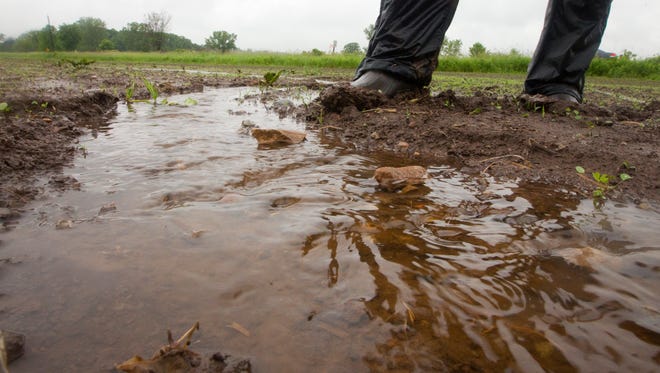EPA OKs slower rollout of water rules for Wisconsin

The U.S. Environmental Protection Agency has approved a bid by Wisconsin officials to allow a slower rollout of rules limiting the discharge of a dominant pollutant into waterways.
The EPA notified the Department of Natural Resources on Monday that it will allow the state to phase in tougher regulations to limit the discharge of phosphorus from point sources such as sewage treatment plants and factories.
Phosphorus is a major ingredient that feeds algae that clog many Wisconsin lakes. In its latest assessment, the DNR in 2016 concluded that 41% of more than 7,700 waters in the state violated water standards for phosphorus.
The action has been in the works by the EPA for months and is not seen as being influenced by the administration of President Donald Trump, who has promised to cut back on environmental regulations.
"Our sense is that it has been working its way through the system for a while," said Scott Laeser, water quality specialist with Clean Wisconsin, a Madison-based environmental group.
RELATED: War over water in the land of plenty
RELATED: Bad science? Growers' water-use theories disputed
Wisconsin approved tougher phosphorus regulations that took effect in 2010 in the final days of the administration of Gov. Jim Doyle. The EPA approved those changes.
Business interests objected to the costs, and at the time the DNR's own analysis said the regulations could cost up to $1 billion over the next decade.
A 2015 analysis by the DNR and state Department of Administration estimated the cost at more than $7 billion over the next 20 years.
But environmental groups said the figures ignored costs of pollution of water resources and their impact on recreation, wildlife and public health. An example: Green Bay's "dead zone" is fed by high levels of nutrients that spur algae growth that depletes oxygen in the water.
The GOP-controlled Legislature in 2014 passed legislation that would give the option to factories and sewage treatment plants to put off fully meeting stricter phosphorus limits for up to 20 years.
Phosphorus also comes from fertilizer, manure, grass clippings and other organic sources.
Parties choosing to put off full compliance must still cut phosphorus loads along the way and pay into a fund for projects in watersheds to reduce runoff pollution.
The EPA agreed Wisconsin could delay fully complying with the phosphorus limits.
The DNR said it was reviewing the EPA action.
In a statement, Sen. Rob Cowles (R-Allouez) and Rep. Amy Loudenbeck (R-Clinton) said the change was a more cost-effective approach to cutting phosphorus pollution.
Environmentalists were initially skeptical of delayed implementation of the regulations. Clean Wisconsin's Laeser said his group will be watching the implementation.
He said the phosphorus law still allows regulated entities to adhere to the stricter limits and to use tools such trading water quality credits that provide financial inducements for polluting less.
Lee Bergquist can be reached at lee.bergquist@jrn.com